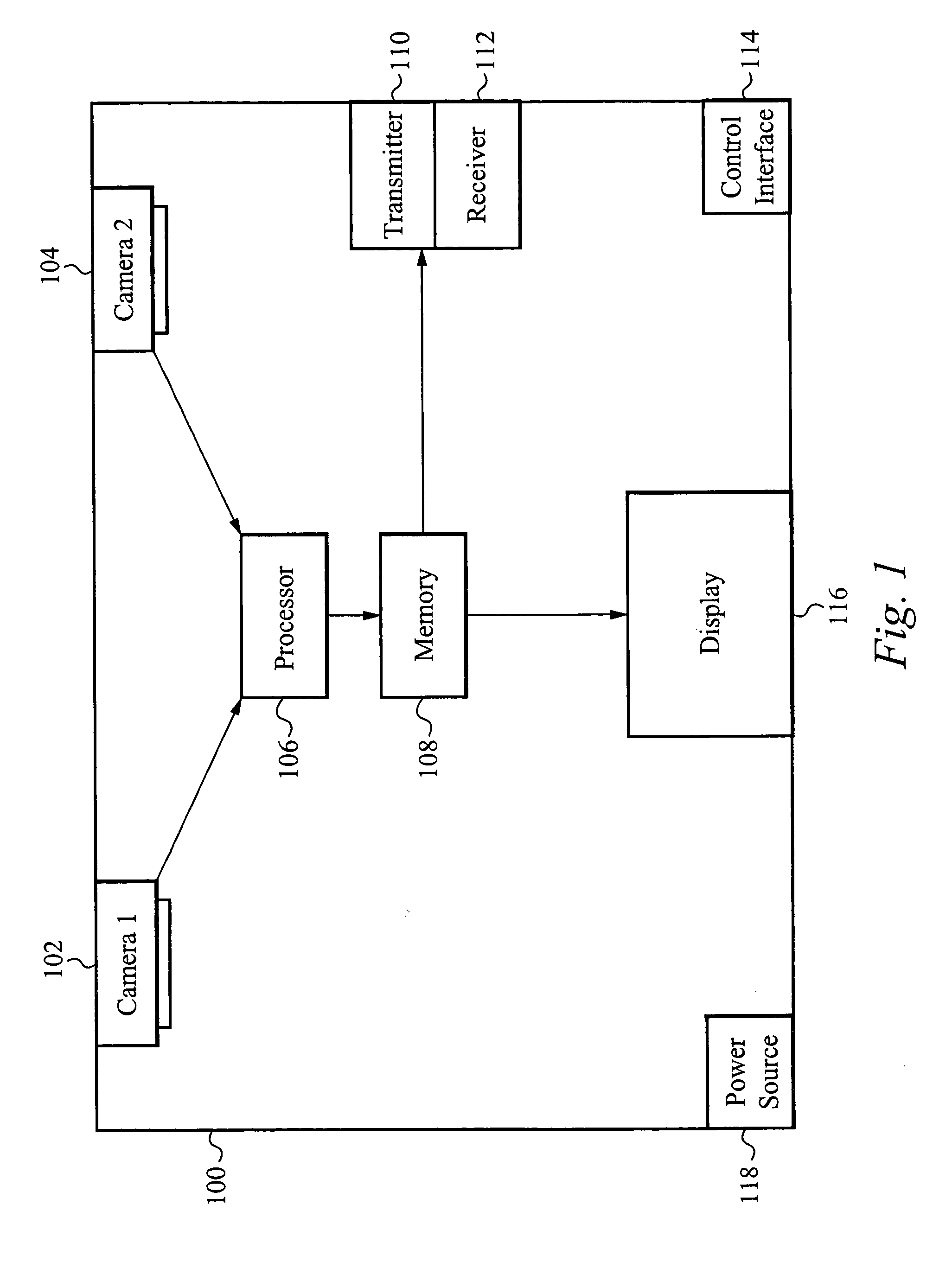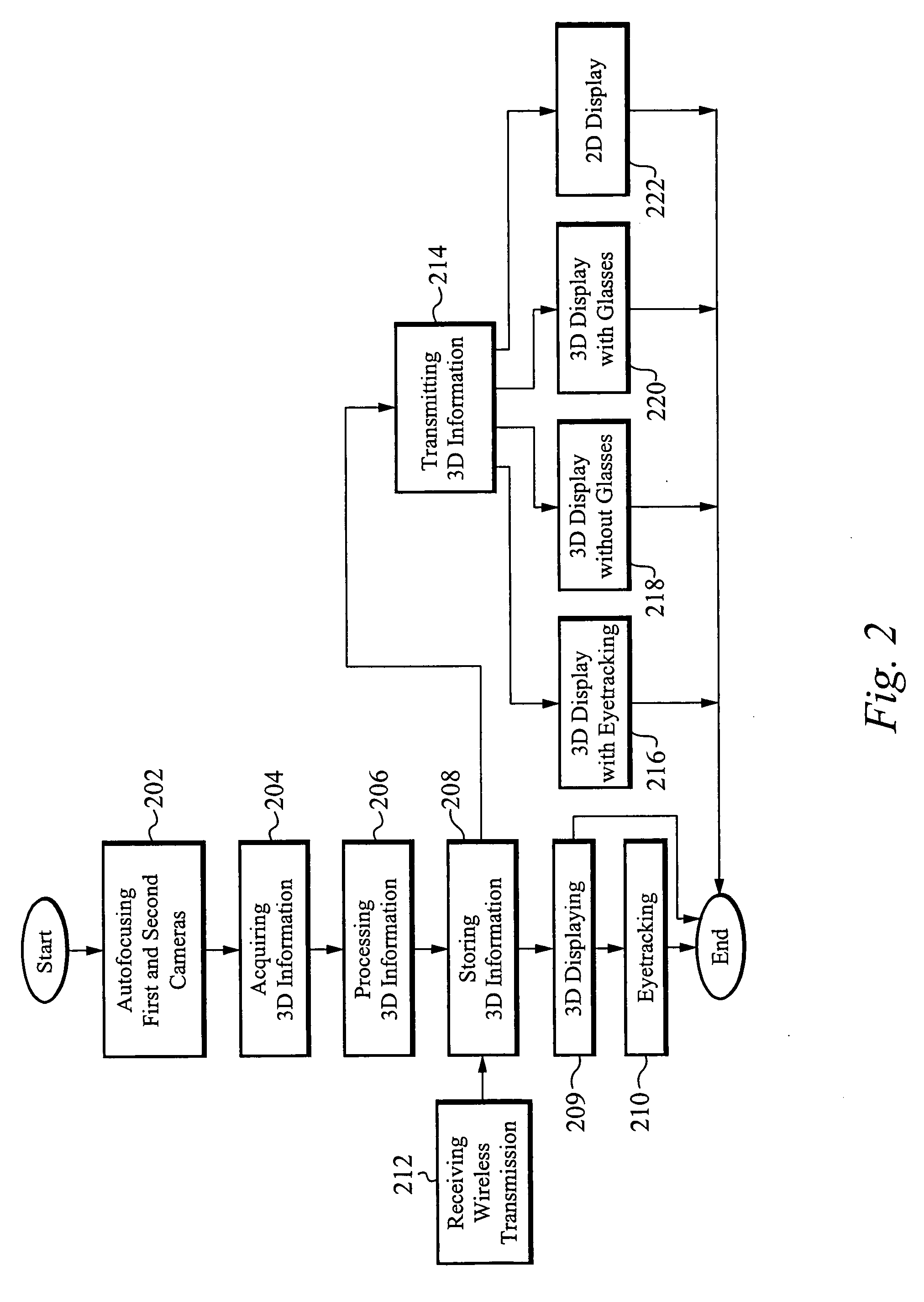Three dimensional acquisition and visualization system for personal electronic devices
a technology of electronic devices and three-dimensional images, applied in the field of three-dimensional (3d) imaging, can solve the problems of three-dimensional technology, he will lose the focus of image, and has never been able to establish itself in the mainstream
- Summary
- Abstract
- Description
- Claims
- Application Information
AI Technical Summary
Benefits of technology
Problems solved by technology
Method used
Image
Examples
Embodiment Construction
[0028] An embodiment of the 3D acquisition and visualization system is implemented in a personal electronic device including but not limited to a laptop computer, PDA, camera phone, digital camera, video camera, and electronic watch.
[0029]FIG. 1 illustrates an internal view of the components within the system of an embodiment of the 3D acquisition and visualization system. The electronic device 100 includes a number of components required to assure proper functionality of the system. In an embodiment, the electronic device is one or more of a number of different devices including a laptop computer, PDA, camera phone, digital camera, video camera or electronic watch. A first digital camera 102 and a second digital camera 104 are located substantially parallel to each other and are utilized in the processes of autofocusing, simultaneously acquiring 3D information, and eye-tracking for 3D display purposes. After the image is acquired by the first digital camera 102 and the second digi...
PUM
 Login to View More
Login to View More Abstract
Description
Claims
Application Information
 Login to View More
Login to View More - R&D
- Intellectual Property
- Life Sciences
- Materials
- Tech Scout
- Unparalleled Data Quality
- Higher Quality Content
- 60% Fewer Hallucinations
Browse by: Latest US Patents, China's latest patents, Technical Efficacy Thesaurus, Application Domain, Technology Topic, Popular Technical Reports.
© 2025 PatSnap. All rights reserved.Legal|Privacy policy|Modern Slavery Act Transparency Statement|Sitemap|About US| Contact US: help@patsnap.com



